Disclosure: This article contains affiliate links. We may earn a commission from purchases at no extra cost to you, which helps our travel content.
There exists a profound parallel between the artistic composition of a well-plated dish and the natural sculptural wonders of Patagonia—both require vision, balance, and an appreciation for the ephemeral. As someone who has spent years analyzing the intersection of culinary artistry and visual aesthetics, I found Argentina to be the perfect canvas where human creativity and natural grandeur converge in spectacular fashion. My recent two-week journey from the sophisticated streets of Buenos Aires to the untamed wilderness of Patagonia offered not merely a vacation, but a sensory pilgrimage that engaged every faculty—from savoring a perfectly aged Malbec against the backdrop of Andean peaks to witnessing the theatrical dance of light across the Perito Moreno Glacier. This itinerary, crafted for those seeking both refinement and adventure, reveals how Argentina's diverse landscape serves as both gallery and playground for the discerning traveler.
Buenos Aires: Cultural Immersion Before the Wilderness
Begin your Argentine odyssey with three days in the sophisticated capital, a city that breathes with European elegance yet pulses with distinctly South American rhythms. I recommend establishing your base at the Palacio Duhau - Park Hyatt, where Belle Époque architecture creates a fitting prelude to your adventure.
On your first morning, venture to the San Telmo district, where the Sunday antique market transforms the cobblestone streets into an open-air museum. Here, I discovered a collection of mid-century silverware that echoed the sculptural minimalism I've long admired. For lunch, bypass the tourist establishments and seek out El Preferido de Palermo, where the provoleta—a grilled provolone cheese dish with chimichurri—achieves that perfect textural contrast between crisp exterior and molten center.
Devote your second day to exploring the Recoleta neighborhood, beginning with the famous cemetery where elaborate mausoleums stand as monuments to Argentina's artistic approach to remembrance. Afterward, the nearby Museo Nacional de Bellas Artes offers an exceptional collection of Argentine art that contextualizes the cultural landscape you'll be traversing. End your day with an evening at Rojo Tango, where the performance transcends mere entertainment to become a visceral expression of Argentine passion.
Before departing the capital, spend your final morning at Café Tortoni, Argentina's oldest coffeehouse, where the intellectual heritage is as rich as their submarino—a hot chocolate preparation that transforms with the submersion of a chocolate bar, much like how you'll soon be transformed by Patagonia's wilderness.
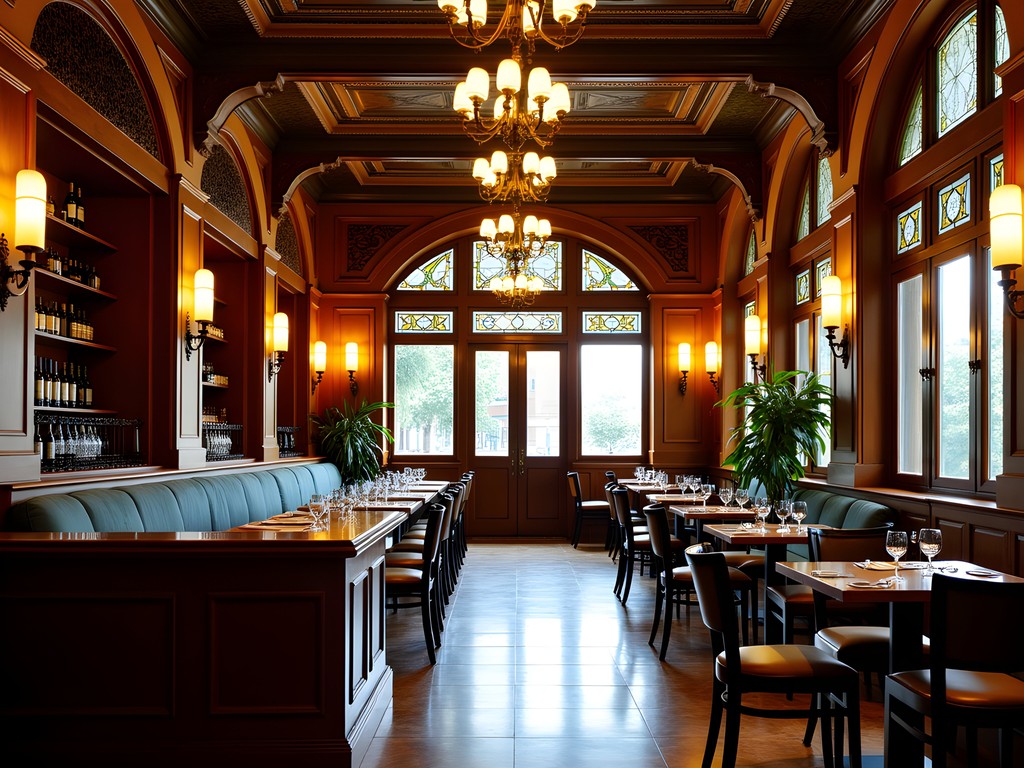
💡 Pro Tips
- Book your Rojo Tango experience at least two weeks in advance—the intimate venue fills quickly
- Visit the San Telmo market early (before 11 am) to avoid crowds and secure the best antique finds
- The Recoleta Cemetery is best photographed in late afternoon when the light creates dramatic shadows across the monuments
El Calafate: Gateway to Glacial Majesty
After the urban sophistication of Buenos Aires, a two-hour flight transports you to El Calafate, where the air carries a crystalline purity that immediately signals your arrival at the threshold of Patagonia's ice kingdom. I suggest three nights at EOLO - Patagonia's Spirit, a Relais & Châteaux property whose minimalist design frames rather than competes with the staggering landscape.
The crown jewel of this region is undoubtedly the Perito Moreno Glacier in Los Glaciares National Park. Rather than merely viewing this colossal ice sculpture from the conventional platforms, arrange a private ice trekking expedition. The experience of traversing the glacier's surface—feeling the ancient ice beneath your crampons while navigating through a labyrinth of cerulean crevasses—offers a tactile connection to geological time that no photograph can convey.
For your equipment needs, I highly recommend investing in proper gear before arrival. My waterproof hiking boots proved invaluable on the glacier, providing essential traction and keeping my feet dry throughout the expedition.
Reserve a day for exploring the less-visited Upsala Glacier by boat, where the scale of calving icebergs creates a natural sound installation that resonates across the water. Return to EOLO for dinner, where the chef's interpretation of Patagonian lamb—slow-roasted for seven hours with indigenous herbs—offers a gastronomic parallel to the day's geological wonders: both ancient processes resulting in profound sensory experiences.
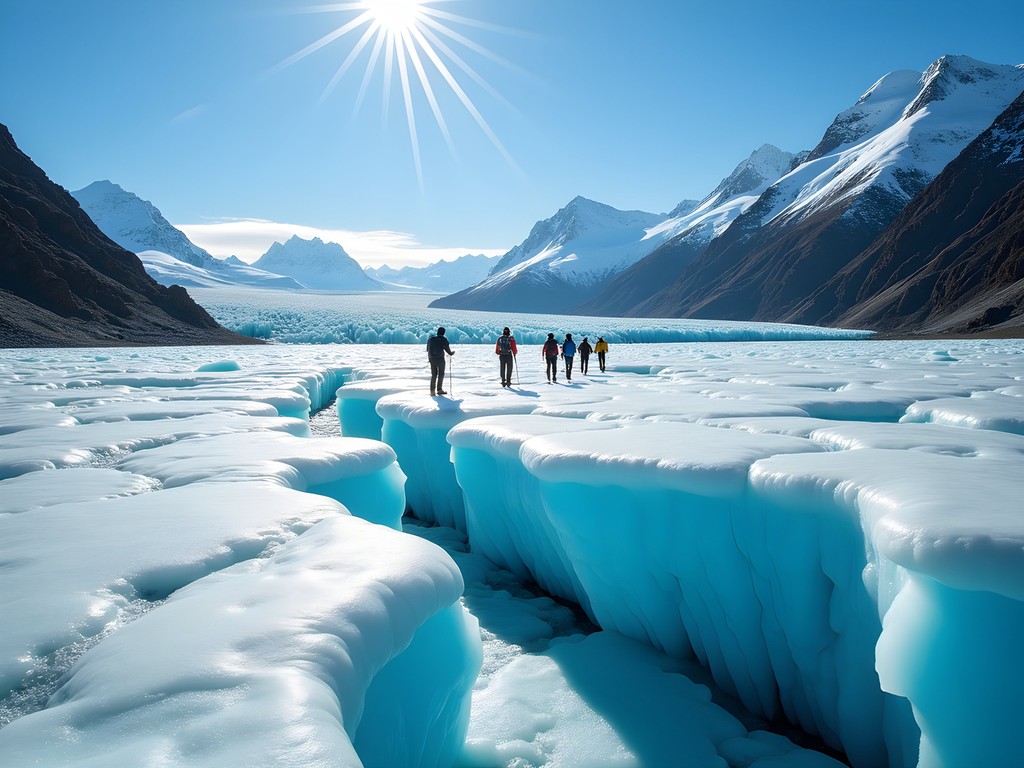
💡 Pro Tips
- Pack polarized sunglasses to properly appreciate the glaciers' blue hues without glare
- Book the 'Big Ice' trek on Perito Moreno at least one month in advance during summer months
- Request a north-facing room at EOLO for the best mountain views at sunrise
El Chaltén: The Hiker's Paradise
A three-hour scenic drive from El Calafate delivers you to El Chaltén, the self-proclaimed trekking capital of Argentina. This frontier-like settlement, nestled at the base of the iconic Mount Fitz Roy, offers a more rustic yet no less luxurious experience at Explora Patagonia Lodge, where floor-to-ceiling windows in each room frame the mountain like a living art installation.
The hiking network surrounding El Chaltén presents a graduated challenge suitable for various expertise levels. Begin with the moderately difficult Laguna de los Tres trail, a 21km round-trip journey that culminates in what I can only describe as nature's perfect composition: the granite spires of Fitz Roy reflected in the turquoise waters of the lagoon below. The visual tension between the jagged peaks and the serene water creates a natural counterpoint that rivals any contemporary installation I've curated.
For photography enthusiasts, I found my mirrorless camera with a wide-angle lens essential for capturing the expansive Patagonian landscapes. The camera's dynamic range handled the challenging lighting conditions beautifully, preserving both shadow detail in the foreground and highlight detail in the often-dramatic skies.
On your second day, challenge yourself with the more technical Cerro Torre trail, where the reward is a view of the needle-like spire that has humbled even the world's most accomplished climbers. Return to the lodge for a recovery session in the spa, where the massage therapists understand the specific needs of hikers, focusing on releasing tension in quadriceps and lower back—areas typically strained by Patagonia's undulating terrain.
The culinary program at Explora deserves special mention: their chef's approach to local trout—cured with Patagonian salt and served with foraged herbs—demonstrates how elevation of simple, regional ingredients can create a dish of remarkable sophistication, much like how the simple elements of rock and ice create the sublime vistas that surround you.

💡 Pro Tips
- Start the Laguna de los Tres hike no later than 8 am to avoid afternoon winds at the summit
- Pack lightweight layers rather than a single heavy jacket—Patagonian weather changes rapidly
- Request the lodge's gourmet picnic lunch service for your hikes—their house-made charcuterie elevates the trail experience
Torres del Paine: The Crown Jewel
Crossing into Chilean Patagonia brings you to Torres del Paine National Park, arguably the most visually arresting landscape in all of South America. The five-hour drive from El Chaltén is itself an exhibition of Patagonian beauty, with the road cutting through steppe landscapes where guanacos graze against distant mountain backdrops.
For this pinnacle of your journey, I recommend four nights at Tierra Patagonia, an architectural marvel whose curved wooden structure echoes the windswept formations of the surrounding landscape. The property's integration with its environment exemplifies how thoughtful design can enhance rather than detract from natural beauty—a philosophy that extends to their sustainably sourced cuisine.
The centerpiece of any visit is the challenging trek to the base of the Torres (towers) themselves. This 18km round-trip journey demands proper preparation. My trekking poles proved essential during the final boulder scramble, providing crucial stability while navigating the moraine that guards the towers' base. The sight that awaits—three granite monoliths rising vertically from a glacial lake—creates a moment of sublime contemplation that justifies every step of the arduous ascent.
Alternate your challenging days with gentler experiences, such as horseback riding across the pampas with local baqueanos (cowboys) whose understanding of this landscape has been passed down through generations. These guides offer cultural context that enriches your understanding of Patagonia beyond its physical beauty.
For wildlife enthusiasts, the park harbors an impressive diversity, including the elusive puma. Arrange a specialized wildlife photography excursion with the lodge's naturalist guides, whose expertise will help you spot and respectfully observe condors, foxes, and if fortune favors, the Andean deer known as huemul—an endangered species that appears on Chile's national coat of arms.
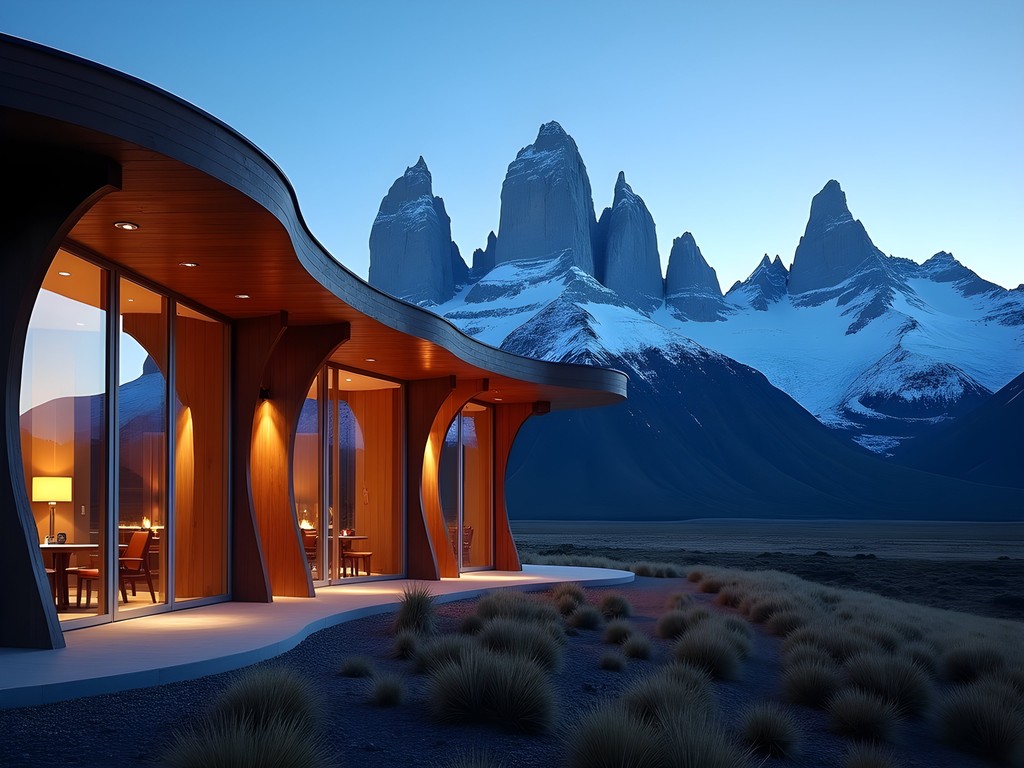
💡 Pro Tips
- Pack a compact but high-quality headlamp for the pre-dawn start required to reach the Torres for sunrise
- Book the private hot spring excursion through Tierra Patagonia for post-hike muscle recovery
- The lodge's wine pairings are exceptional—don't miss their vertical tasting of Chilean Carménère vintages
Ushuaia: The End of the World
Conclude your Patagonian odyssey in Ushuaia, the world's southernmost city, where the Andes finally surrender to the sea. This frontier outpost, with its colorful buildings set against dramatic mountain backdrops, serves as both culmination and counterpoint to your journey.
The luxury expedition vessel Australis offers an unparalleled opportunity to navigate the Beagle Channel, following in Darwin's wake while observing colonies of Magellanic penguins and sea lions against a backdrop of retreating glaciers. The ship's onboard naturalists provide scientific context that deepens your appreciation of this fragile ecosystem.
For your final evening, I recommend dinner at Kaupé, where Chef Ernesto Vivian's interpretation of centolla (king crab) demonstrates the same precision and respect for ingredients that characterizes the finest restaurants globally. The dish—featuring crab prepared three ways, each highlighting different textural aspects of this prized local delicacy—served with a vista of the harbor lights reflecting on the channel waters, provides a fitting denouement to your Patagonian experience.
Before departing, visit the Maritime Museum housed in the former prison, where the exhibits on Antarctic exploration offer historical context to your journey. The stark contrast between the confined spaces of the prison cells and the boundless wilderness you've been traversing creates a poignant reflection on human relationships with extreme environments.
For weather protection in this notoriously windy region, my waterproof shell proved invaluable, offering superior protection against Ushuaia's unpredictable elements without sacrificing mobility during shore excursions.
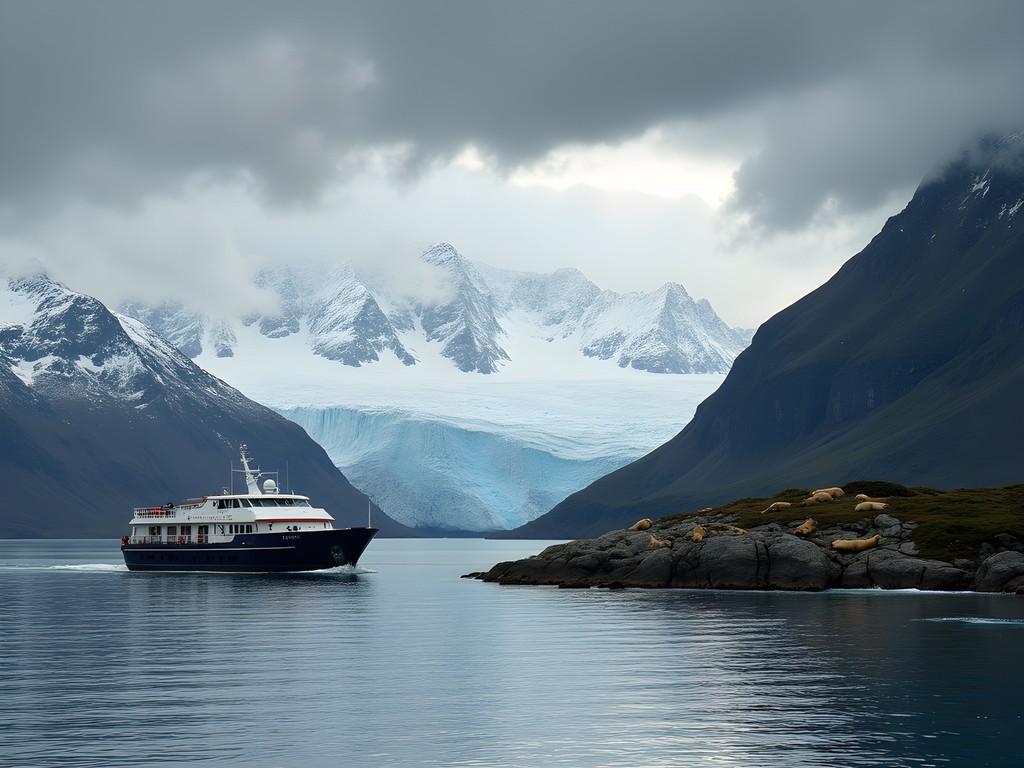
💡 Pro Tips
- Book the Australis expedition at least six months in advance—these small vessels fill quickly
- Request a northwest-facing room at Los Cauquenes Resort for views of both mountains and the Beagle Channel
- The Maritime Museum requires at least three hours to properly appreciate—plan accordingly
Final Thoughts
As we departed Ushuaia, watching the rugged coastline recede from the aircraft window, I reflected on how Patagonia had transformed my understanding of luxury travel. True opulence here isn't found in gilded surfaces or extravagant amenities, but in moments of privileged access—to pristine wilderness, to geological wonders shaped over millennia, to culinary traditions that honor place and provenance. This journey from Buenos Aires to the uttermost ends of the Earth offers a rare opportunity to witness the dialogue between human creativity and natural grandeur, between ephemeral experience and eternal landscape. Like the perfect culinary creation, Patagonia demands presence—it must be experienced with all senses engaged, in real time, as no photograph or written account can fully capture its sublime power. For those willing to venture beyond conventional luxury into a realm where comfort meets challenge and refinement meets wilderness, this Patagonian trajectory promises not merely a vacation, but a profound recalibration of perspective.
✨ Key Takeaways
- Balance urban sophistication in Buenos Aires with progressive immersion into Patagonia's wilderness
- Invest in proper technical gear—Patagonian weather demands respect and preparation
- Allow flexibility in your itinerary to accommodate changing weather conditions
- Engage with local guides whose generational knowledge adds invaluable context to the landscape
- Book accommodations that enhance rather than distract from the natural environment
📋 Practical Information
Best Time to Visit
December through February (Austral summer)
Budget Estimate
$15,000-20,000 per person for a comprehensive luxury experience
Recommended Duration
14-16 days minimum
Difficulty Level
Challenging
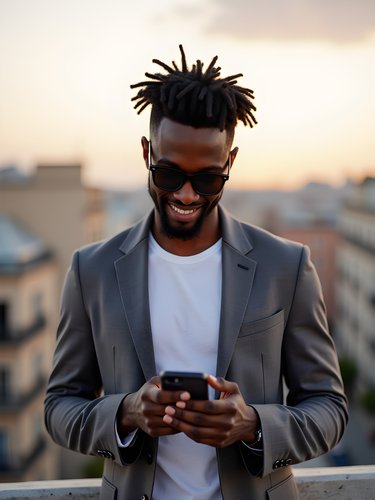
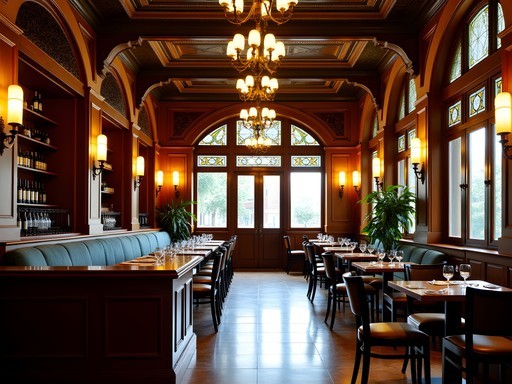
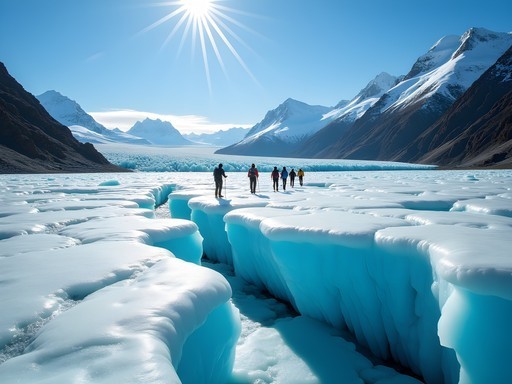

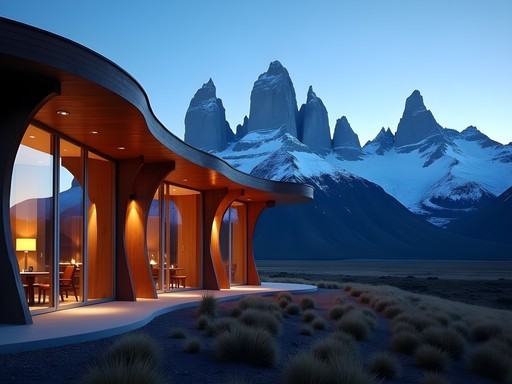











Comments
coolchamp
Those glacier photos are incredible! Adding this to my bucket list right now.
Douglas Bradley
Reese, your parallel between culinary art and Patagonian landscapes is brilliantly drawn. I found the same contrast between Buenos Aires' structured beauty and Patagonia's wild grandeur when I visited. One logistical tip for readers: the domestic flights between BA and El Calafate often have strict baggage weight limits that aren't well advertised. I'd recommend checking with your specific airline beforehand. Also, for Torres del Paine, reservations for refugios are absolutely essential months in advance during high season (Dec-Feb). The park has become increasingly strict about this since the pandemic.
cooltime
Great post! Would you recommend this trip for someone who's not super experienced with hiking? The views look amazing but I'm worried about the difficulty level.
Douglas Bradley
Not the author, but I did this route last year. There are plenty of easier trails in both El Chaltén and Torres del Paine. In El Chaltén, try Laguna Capri (easier than going all the way to Laguna de los Tres) and in Torres, the shorter circuits are still spectacular. Just bring proper hiking boots and layers - the weather changes constantly!
cooltime
Thanks Douglas! That's really reassuring. Any specific trail recommendations for beginners in Torres del Paine?
Douglas Bradley
The hike to Mirador Cuernos is relatively easy and has amazing views of the iconic horns. Also, the Salto Grande waterfall trail is short but rewarding. I used my hiking poles which made the uneven terrain much easier to navigate as a beginner.
beachlife
Just got back from a similar route last month and this post is spot on! El Chaltén was the highlight for me - those trails to Laguna de los Tres were exactly as you described, challenging but SO worth it for that first glimpse of Mt. Fitz Roy. We spent an extra day in El Calafate to do the ice trekking on Perito Moreno which I'd highly recommend to anyone following this itinerary. The crampons were intimidating at first but you get used to them quickly!
coolchamp
Did you need to book the ice trekking far in advance? Planning to go in November.
beachlife
Definitely book at least 2-3 weeks ahead for November! It was selling out when we went in shoulder season. The mini-trekking option is good if you're short on time.
moonlife
Just got back from a similar route last month! One thing I'd add - the bus from El Calafate to El Chaltén has incredible views but the WiFi never worked for us despite being advertised. Also, we found Buenos Aires needed more time than we gave it. The food scene alone could take weeks to explore properly! The contrast between the city's energy and Patagonia's wilderness made for such a perfect balance. Did anyone else feel like they needed more time in BA?
tripblogger
Totally agree about Buenos Aires! We scheduled 4 days and it wasn't nearly enough. Just exploring San Telmo and Palermo took two full days.
Bryce Diaz
The bus WiFi is basically a myth throughout Patagonia! But honestly, the landscapes are so captivating you won't even think about checking your phone. And yes, BA deserves at least 5 days in my opinion.
dreamphotographer
That shot of Perito Moreno glacier is absolutely stunning! What time of day did you take it?
Reese Ellis
Thank you! That was taken around 9am - the morning light on the glacier creates that amazing blue color. If you go, try to be there early before the big tour groups arrive.
dreamphotographer
Perfect tip, thanks! Early morning light is always worth the early wake-up call.
freeace
Just got back from doing this exact route and it was mind-blowing! One thing I wish I knew beforehand - the internal flights between Buenos Aires and El Calafate often have strict baggage weight limits that they actually enforce. Pack light or be ready to pay! Also, the empanadas at La Tablita in El Calafate are to die for!
Bryce Diaz
This brought back so many memories! I did a similar route last year but added Ushuaia at the end - truly felt like I was at the edge of the world. One thing I'd add for anyone planning this trip: the winds in Patagonia are no joke. I remember setting up my tent in Torres del Paine and watching another camper's tent literally tumble away across the landscape! My trekking poles were absolute lifesavers on those windy ridges. Reese, did you make it to any of the estancias for an asado? That was one of my highlights - eating lamb under the stars with gauchos telling stories of old Patagonia.
Reese Ellis
Bryce - yes! We stayed at Estancia Cristina for a night. The asado was incredible, and the stargazing there was among the best I've experienced anywhere in the world. Those Patagonian winds are indeed legendary - I've never gripped my hat so tightly!
tripblogger
Amazing post! How many days would you recommend for the El Chaltén portion? Planning a trip for next spring and trying to figure out how to divide my time between all these spots.
Reese Ellis
I'd recommend at least 4-5 days in El Chaltén if you're an avid hiker. That gives you enough time for the major trails (Fitz Roy, Cerro Torre) plus a buffer day for bad weather, which is common!
tripblogger
Perfect, thanks! Will definitely plan for those extra weather buffer days.
Adam Nichols
Excellent breakdown of the route. Having done extensive research on Patagonian travel patterns, I'd add that the shoulder seasons (October-November and March-April) offer the best balance between weather conditions and crowd levels. December through February sees tourist numbers increase by approximately 65% in Torres del Paine alone, with corresponding price increases of 30-40% for accommodations. The wind patterns also shift significantly between seasons - with wind speeds averaging 15-20% higher during summer months in the open areas around El Calafate. For those planning this journey, I'd recommend allocating at least 14 days to avoid the rushed feeling that many travelers report when trying to compress this itinerary.
Reese Ellis
Great insights, Adam! Completely agree about the shoulder seasons. I'd add that November generally has fewer crowds than April while still offering relatively stable weather.
Venture X
Premium card with 2X miles, $300 travel credit, Priority Pass